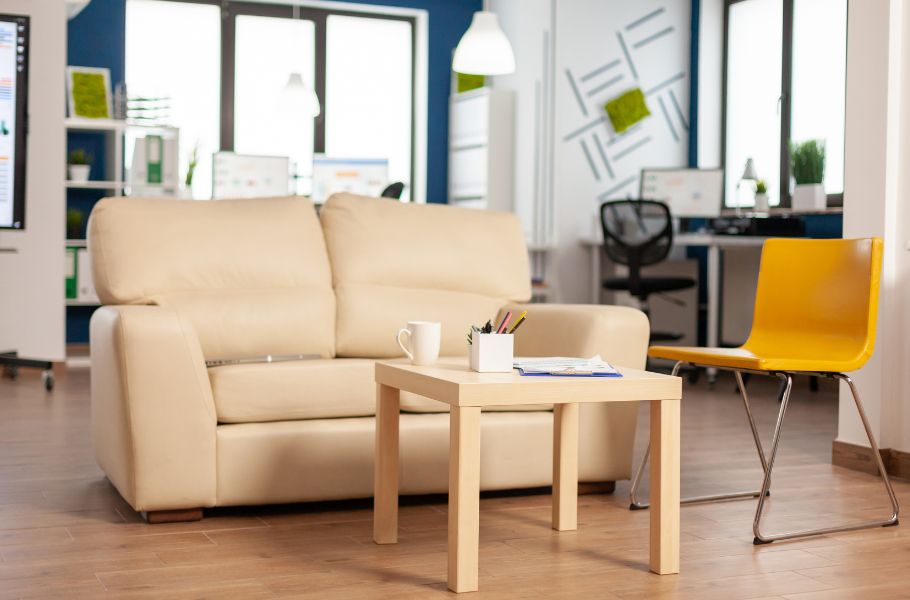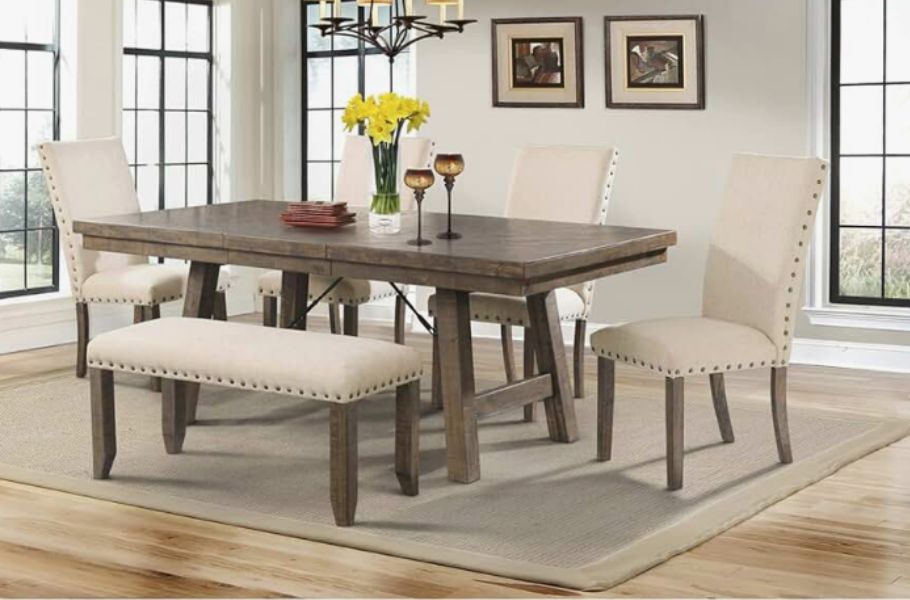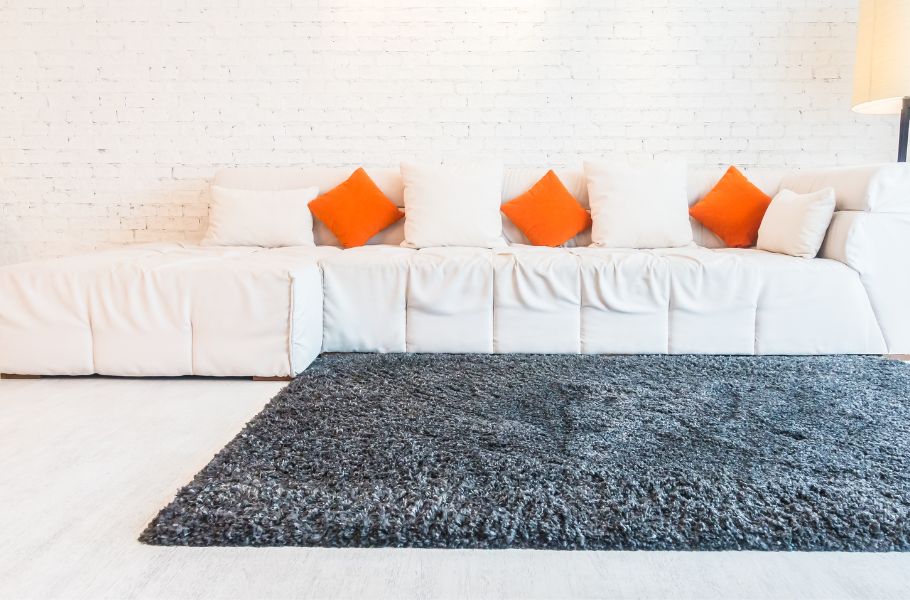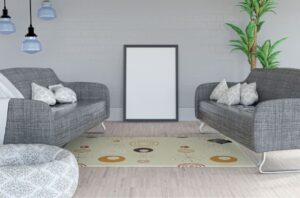Organize Furniture in Small Living Room : Health Tips Included
Designing a small living room can feel like solving a puzzle—each furniture piece needs to fit just right, serve a purpose, and contribute to the comfort of the space. Many homeowners struggle with layout decisions, often feeling overwhelmed by limited square footage. But here’s the good news: health experts now offer insights not just on space-saving hacks, but also on how your living room setup can improve your well-being.
From boosting mental clarity to supporting better posture, how you organize furniture in small living room spaces affects more than just appearance—it affects how you feel. Let’s explore expert-backed tips that blend practicality with wellness to help you create a space you’ll truly love.
1. Begin With a Purpose
Before placing a single chair, take a moment to ask yourself how you intend to use your living room. Will it be a place to relax? A mini home office? A reading nook? Knowing its primary purpose will guide your choices. When you organize furniture in small living room settings, clarity in function can lead to a more thoughtful, balanced layout.
2. Embrace Minimalism and Decluttering
Clutter not only overwhelms the eye—it can also heighten stress. Health experts consistently emphasize the connection between a clutter-free space and reduced anxiety. Start by removing items that are rarely used or don’t bring joy. Streamlining your belongings will make it much easier to organize furniture in small living room environments with intention and calm.
- Measure Before You Move
It may seem obvious, but many skip this step. Grab a tape measure and jot down the dimensions of your room. Include window and door placements too. Having these figures in hand makes it easier to select pieces that fit the space without overwhelming it. A well-measured approach is key when trying to organize furniture in small living room layouts efficiently.
4. Prioritize Multi-Functional Furniture
In smaller living areas, every piece needs to earn its spot. Look for items that serve multiple roles: think ottomans with hidden storage, extendable tables, or sofas that double as guest beds. Health experts recommend reducing furniture overload as it allows more movement and better airflow—factors that contribute to physical comfort and reduced fatigue.
- Anchor the Room with a Focal Piece
Usually, this will be the sofa or main seating arrangement. Place it first, typically against a wall, and then build the room around it. When you organize furniture in small living room spaces by anchoring with a key piece, it gives the rest of the layout a sense of direction and coherence.
- Maintain Open Pathways
A major concern for health professionals is ensuring there’s enough room to walk comfortably. Avoid placing furniture where it blocks natural walkways. Experts suggest allowing at least 2.5 to 3 feet of clearance for walking areas to prevent unnecessary strain or injury, especially in homes with children or seniors.
7. Use Wall and Vertical Space Wisely
Floating shelves, vertical bookcases, or mounted lighting fixtures save valuable floor space. This helps you organize furniture in small living room spaces without overcrowding them. Plus, freeing up the floor makes cleaning easier and improves indoor air circulation—something that benefits respiratory health.
8. Let in Natural Light
Avoid placing tall furniture in front of windows. Natural light makes rooms feel bigger and more vibrant. Health experts say exposure to daylight improves mood, regulates sleep, and reduces eye strain. Mirrors can also be used strategically to reflect light and add visual space.
9. Choose Ergonomic Seating
If your living room doubles as a work-from-home area or if you spend hours watching TV, seating comfort is crucial. Invest in chairs and sofas that support good posture. Experts warn that long hours on poorly designed furniture can lead to back pain, neck stiffness, and even poor circulation.
When you organize furniture in small living room setups, don’t compromise on health-supportive furniture.
10. Define Zones With Subtle Dividers
Even in a small space, defining different activity areas can increase functionality. Use rugs, lighting, or furniture placement to subtly distinguish areas—for example, a reading nook versus a media area. Health experts note that mentally separating spaces helps reduce cognitive overload and keeps stress at bay.
11. Keep Daily Items Within Reach
Avoid the frustration of having to stretch or dig for items like remotes, chargers, or books. Place frequently used items on accessible shelves or inside storage ottomans. Health professionals emphasize minimizing strain from repetitive movements, especially in tight spaces.
12. Add Nature to the Mix
Bringing in plants doesn’t just look pretty—it actually supports better air quality and lowers stress levels. Studies show that just seeing greenery can calm the nervous system. When you organize furniture in small living room spaces, consider placing a plant in a well-lit corner to infuse the room with freshness and tranquility.
13. Keep Corners Light and Open
Avoid placing bulky furniture in corners, which can make the room feel boxed in. Instead, keep these areas open or use them for slim lamps or small shelves. A more open layout allows energy and people to move freely—something health experts encourage for reducing tension and creating peace of mind.
- Use Calming Colors and Soft Textures
Light colors reflect more light and help the room feel larger. Soft fabrics like cotton or linen promote physical comfort and reduce visual noise. When you organize furniture in small living room designs, choosing calm tones can set the mood for relaxation and focus.
15. Refresh and Rearrange Often
Don’t hesitate to change your setup from time to time. Even minor tweaks—like switching a chair’s position or replacing a rug—can refresh your energy and perspective. Health experts say periodic changes in the environment can uplift mood, stimulate creativity, and reduce monotony.
Conclusion
Designing a small living room doesn’t mean sacrificing comfort or style. With expert-backed strategies, you can create a space that not only looks appealing but also supports your physical and mental well-being.
When you organize furniture in small living room spaces thoughtfully, you turn limited square footage into a wellness-focused sanctuary. From ergonomic seating to strategic lighting and minimal clutter, every detail contributes to a healthier, more enjoyable living experience.
Whether you’re redecorating from scratch or just fine-tuning your current setup, remember—less can be more, especially when your home supports your peace of mind.
How to Organize Furniture in Small Living Room – Health Experts Have Their Say
Designing a small living room can feel like solving a puzzle—each furniture piece needs to fit just right, serve a purpose, and contribute to the comfort of the space. Many homeowners struggle with layout decisions, often feeling overwhelmed by limited square footage. But here’s the good news: health experts now offer insights not just on space-saving hacks, but also on how your living room setup can improve your well-being.
From boosting mental clarity to supporting better posture, how you organize furniture in small living room spaces affects more than just appearance—it affects how you feel. Let’s explore expert-backed tips that blend practicality with wellness to help you create a space you’ll truly love.
1. Begin With a Purpose
Before placing a single chair, take a moment to ask yourself how you intend to use your living room. Will it be a place to relax? A mini home office? A reading nook? Knowing its primary purpose will guide your choices. When you organize furniture in small living room settings, clarity in function can lead to a more thoughtful, balanced layout.
2. Embrace Minimalism and Decluttering
Clutter not only overwhelms the eye—it can also heighten stress. Health experts consistently emphasize the connection between a clutter-free space and reduced anxiety. Start by removing items that are rarely used or don’t bring joy. Streamlining your belongings will make it much easier to organize furniture in small living room environments with intention and calm.
- Measure Before You Move
It may seem obvious, but many skip this step. Grab a tape measure and jot down the dimensions of your room. Include window and door placements too. Having these figures in hand makes it easier to select pieces that fit the space without overwhelming it. A well-measured approach is key when trying to organize furniture in small living room layouts efficiently.
4. Prioritize Multi-Functional Furniture
In smaller living areas, every piece needs to earn its spot. Look for items that serve multiple roles: think ottomans with hidden storage, extendable tables, or sofas that double as guest beds. Health experts recommend reducing furniture overload as it allows more movement and better airflow—factors that contribute to physical comfort and reduced fatigue.
- Anchor the Room with a Focal Piece
Usually, this will be the sofa or main seating arrangement. Place it first, typically against a wall, and then build the room around it. When you organize furniture in small living room spaces by anchoring with a key piece, it gives the rest of the layout a sense of direction and coherence.
- Maintain Open Pathways
A major concern for health professionals is ensuring there’s enough room to walk comfortably. Avoid placing furniture where it blocks natural walkways. Experts suggest allowing at least 2.5 to 3 feet of clearance for walking areas to prevent unnecessary strain or injury, especially in homes with children or seniors.
7. Use Wall and Vertical Space Wisely
Floating shelves, vertical bookcases, or mounted lighting fixtures save valuable floor space. This helps you organize furniture in small living room spaces without overcrowding them. Plus, freeing up the floor makes cleaning easier and improves indoor air circulation—something that benefits respiratory health.
8. Let in Natural Light
Avoid placing tall furniture in front of windows. Natural light makes rooms feel bigger and more vibrant. Health experts say exposure to daylight improves mood, regulates sleep, and reduces eye strain. Mirrors can also be used strategically to reflect light and add visual space.
9. Choose Ergonomic Seating
If your living room doubles as a work-from-home area or if you spend hours watching TV, seating comfort is crucial. Invest in chairs and sofas that support good posture. Experts warn that long hours on poorly designed furniture can lead to back pain, neck stiffness, and even poor circulation.
When you organize furniture in small living room setups, don’t compromise on health-supportive furniture.
10. Define Zones With Subtle Dividers
Even in a small space, defining different activity areas can increase functionality. Use rugs, lighting, or furniture placement to subtly distinguish areas—for example, a reading nook versus a media area. Health experts note that mentally separating spaces helps reduce cognitive overload and keeps stress at bay.
11. Keep Daily Items Within Reach
Avoid the frustration of having to stretch or dig for items like remotes, chargers, or books. Place frequently used items on accessible shelves or inside storage ottomans. Health professionals emphasize minimizing strain from repetitive movements, especially in tight spaces.
12. Add Nature to the Mix
Bringing in plants doesn’t just look pretty—it actually supports better air quality and lowers stress levels. Studies show that just seeing greenery can calm the nervous system. When you organize furniture in small living room spaces, consider placing a plant in a well-lit corner to infuse the room with freshness and tranquility.
13. Keep Corners Light and Open
Avoid placing bulky furniture in corners, which can make the room feel boxed in. Instead, keep these areas open or use them for slim lamps or small shelves. A more open layout allows energy and people to move freely—something health experts encourage for reducing tension and creating peace of mind.
- Use Calming Colors and Soft Textures
Light colors reflect more light and help the room feel larger. Soft fabrics like cotton or linen promote physical comfort and reduce visual noise. When you organize furniture in small living room designs, choosing calm tones can set the mood for relaxation and focus.
15. Refresh and Rearrange Often
Don’t hesitate to change your setup from time to time. Even minor tweaks—like switching a chair’s position or replacing a rug—can refresh your energy and perspective. Health experts say periodic changes in the environment can uplift mood, stimulate creativity, and reduce monotony.
Conclusion
Designing a small living room doesn’t mean sacrificing comfort or style. With expert-backed strategies, you can create a space that not only looks appealing but also supports your physical and mental well-being.
When you organize furniture in small living room spaces thoughtfully, you turn limited square footage into a wellness-focused sanctuary. From ergonomic seating to strategic lighting and minimal clutter, every detail contributes to a healthier, more enjoyable living experience.
Whether you’re redecorating from scratch or just fine-tuning your current setup, remember—less can be more, especially when your home supports your peace of mind.
Share this content:














Post Comment